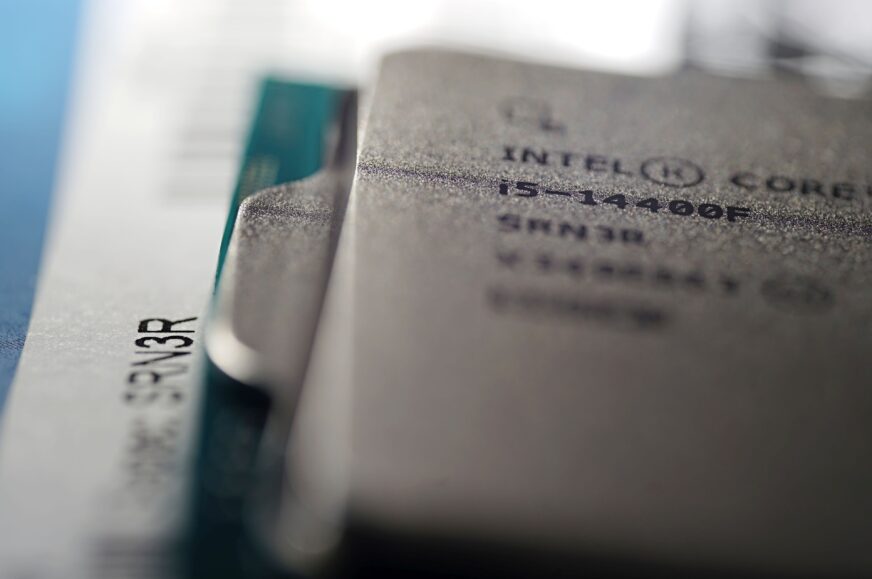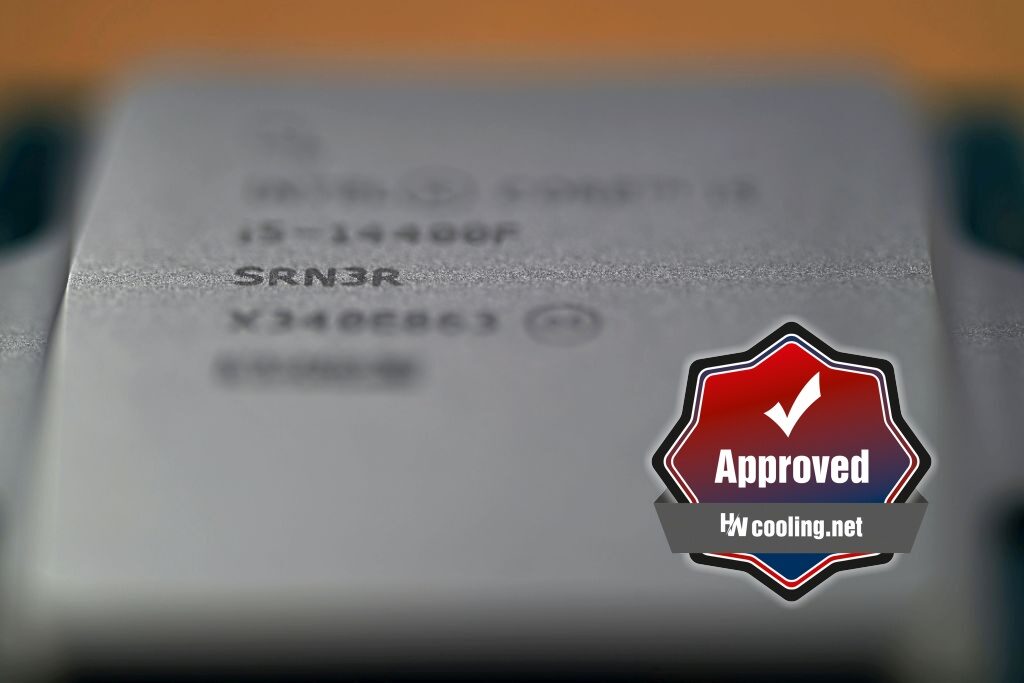Conclusion
For completeness of Intel Core i5-14400F processor tests we add the results of its second stepping. We’ve already tested the B0 variant, now it’s time for the C0. Its availability in stores is, at least at the moment, considerably worse and the question arises whether it is worth it at all. Is there any point in aiming for stepping C0 or is B0 also “okay”? Or does it “not matter” (what you get in the shopping lottery)?
Conclusion
The C0 stepping of the Core i5-14400F is “worse” than the B0 stepping in almost every way. In the end, it is also quite good that there is little of it (and the B0 prevails). At maximum load, when the speed of the Ci5-14400F C0 is comparable to and rather lower than the Ci5-14400F B0, we also saw approximately 19% (20 W) higher power consumption at the same time. This also points to the lower efficiency of stepping C0.
A year ago, the Ci5-13400F B0 and C0 were more evenly matched in terms of efficiency, but that was at lower clock speeds, with which the Intel 7 (versus Intel 7 Ultra – Raptor Lake and Raptor Lake Refresh) manufacturing node can be more efficient, and also at a different point in time. It probably cannot be ruled out that the 14th generation is already drawing on the “last reserves” with the lowest quality characteristics or with characteristics at the upper end of the tolerances. In stepping C0, the Core i5-14400F has up to about 31% higher power consumption than the Core i5-13400F.
Sure, there’s some increase in power consumption because of the 200 MHz higher CPU core clock speeds, but that’s also with stepping B0, where the power consumption is even reduced a bit. From about 112 W (Ci5-13400F) to about 108 W (Ci5-14400F). Some small percentage across samples may fluctuate (contrary to what is written in the endnote of the first chapter), but certainly not to the extent that these proportions reverse – this is already too much variation. And they also do well to point out that there is also some efficiency increases in manufacturing across generations even when using the same process, which is key to the company, in this case the Intel 7 Ultra. This reasoning logically fits quite well with the application of older wafers (C0) for lower-power (35 W) processor models (the 14400T and the 14500T), with which the lower efficiency is not as pronounced or they may even be more efficient in their operating range. This is never the case with 65W TDP models anymore, even at lighter workloads the Core i5-14400F stepping B0 is a lower-power processor.
In single-threaded workloads, the Ci5-14400F B0 is about 7% lower-power and in games it’s 12–34% to the detriment of the stepping C0. For gaming deployments, it should also be noted that in some cases the Ci5-14400F C0 is the faster processor, at 1080p and 1440p resolutions, a 17–25% higher average framerate is achieved in CS:GO, and +8% (at 1080p) is also achieved in DOOM Eternal, for example. We can assure you that this is definitely not a measurement error, it comes out like this repeatedly. At higher resolutions, when we consider FHD and QHD, stepping C0 is usually faster, which is then reflected in the higher average gaming performance by 3%, or 5%. In UHD (2160p) it’s only 2%, but with a more powerful graphics card than the RTX 3080/RTX 4070 or RX 7800 XT, it can be more.
CPU core clock speeds are virtually the same across different workloads for both Core i5-14400F steppings, and as far as temperatures are concerned, they’re lower with the B0. The higher temperatures of the C0 are mainly related to the higher power consumption, the smaller die area (approx. 209 vs. 257 mm2) seems to have a minimal impact on them.
For a general assessment of the Core i5-14400, see the standard analysis, this one was only aimed at comparing existing steppings against each other. In terms of verbal evaluation and recommendations, nothing fundamentally changes, although the C0 stepping is more in line with the “Approved” award than the “Smart buy!” one (given to the Ci5-14400F stepping B0).
English translation and edit by Jozef Dudáš
| Intel Core i5-14400F (C0) |
| + Up to 10 cores and 16 threads |
| + Higher multi-threaded performance compared to the R5 7600 |
| + Attractive price/performance ratio (especially multi-threaded) |
| + High single-threaded performance. Higher than the Core i5-13400F |
| + Gaming performance sometimes higher than the Core i5-14400F stepping B0 |
| + Regardless of load intensity, high power efficiency |
| + Low idle power consumption |
| + Very high performance per clock |
| + Advanced 7nm manufacturing node |
| + Low temperatures |
| + In some cases, top-notch gaming performance... |
| ... but in some games lower than the Core i5-12400(F) due to E cores slowing down |
| - Relatively lower efficiency (still below Core i5-14600K at maximum performance) |
| - Single-threaded performance significantly lower than the Ryzen 5 7600 |
| - Does not have an integrated graphics core |
| - Poor availability. At least regarding retail |
| Approximate retail price: 196 EUR |
ZWe are grateful to Datacomp e-shop for cooperation in providing the tested hardware
Special thanks also to Blackmagic Design (for DaVinci Resolve Studio license), Topaz Labs (for DeNoise AI, Gigapixel AI and Sharpen AI licenses) and Zoner (for Photo Studio X license)
- Contents
- Intel Core i5-14400F (C0 vs. B0)
- Methodology: performance tests
- Methodology: how we measure power draw
- Methodology: temperature and clock speed tests
- Test setup
- 3DMark
- Assassin’s Creed: Valhalla
- Borderlands 3
- Counter-Strike: GO
- Cyberpunk 2077
- DOOM Eternal
- F1 2020
- Metro Exodus
- Microsoft Flight Simulator
- Shadow of the Tomb Raider
- Total War Saga: Troy
- Overall gaming performance
- Gaming performance per euro
- PCMark and Geekbench
- Web performance
- 3D rendering: Cinebench, Blender, ...
- Video 1/2: Adobe Premiere Pro
- Video 2/2: DaVinci Resolve Studio
- Graphics effects: Adobe After Effects
- Video encoding
- Audio encoding
- Broadcasting (OBS and Xsplit)
- Photos 1/2: Adobe Photoshop and Lightroom
- Photos 2/2: Affinity Photo, Topaz Labs AI Apps, ZPS X, ...
- (De)compression
- (De)encryption
- Numerical computing
- Simulations
- Memory and cache tests
- Processor power draw curve
- Average processor power draw
- Performance per watt
- Achieved CPU clock speed
- CPU temperature
- Conclusion











What is the explanation of the occasional erratic results? For instance, the first results for 3D mark: 14400F performs 6x better there than 14900k (and everything else)! I noticed similar weird results for multiple other tests as well. For example, in several graphics tests (gpu-based?), 12100 was the fastest one.
There may be several reasons. For a deeper analysis it is necessary to have an overview of the activity of all cores and the consumption for specific tests. We have this only for selected tests, for all tests it is impossible with such a large subset (of tests). We do not even do some tests for Intel processors with little and big cores and we do not include them in the graphs, because we know that the processor is not fully loaded and for example only little cores are used (there are boxes with a warning about this in all the result chapters that are concerned). In such cases we would, of course, measure significantly higher speed with the Ci3-12100F (with four P cores) than Ci5-14400F (with four E cores). In some subtests, the behavior with poor utilization of the P cores definitely occurs, and for example this can explain the things you are asking about. But of course there may be more explanations, and it is not possible to deal with every single situation in such a range of tests, and we can only speculate on the results in this way. 🙂
PS: Some, typically very short tests, are also affected by the speed with which a given processor can react to a change in CPU core(s) clock speeds (e.g. in a single-threaded load).